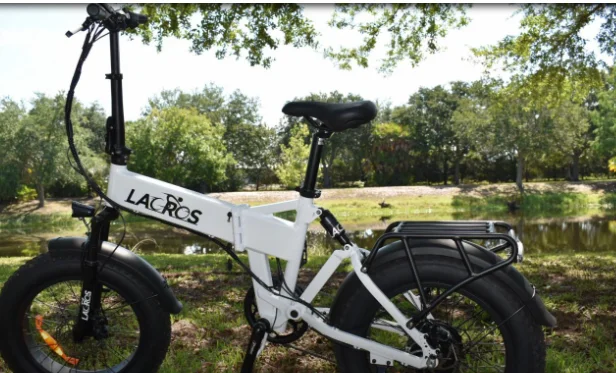What is the Difference Between eBike and Regular Mountain Bike (MTB)?

Mountain biking is booming. More people are hitting trails, and the bikes are changing fast. One hot debate: should you get a traditional mountain bike or an electric one? Understanding the key differences can help you choose the best ride for your style and needs. Let’s break down what makes off road eBikes and regular MTBs unique.
Understanding Mountain Bikes and eBikes
What is a Mountain Bike?
A mountain bike, or MTB, is built for rough trails, steep climbs, and challenging terrain. It’s lightweight with strong frames, knobby tires, and often comes with suspension to soak up bumps. These bikes are popular with fun-seekers, trail riders, and competitive racers alike. They rely solely on your pedaling power to get around.
What is an eBike?
An eBike looks similar but has a small electric motor that gives you a boost. It combines a traditional bike with electric parts, like a motor and battery. The motor can help when you’re climbing hills or fighting against a headwind. Some eBikes have a pedal-assist mode, meaning the motor kicks in as you pedal; others have a throttle, letting you control speed without pedaling.
Key Differences in Design and Components
Frame and Build
Regular MTBs are designed to be light and nimble. They’re made from materials like aluminum or carbon fiber. Electric bikes tend to be heavier because of the battery and motor, adding a few extra pounds. This weight can change how the bike feels on tight turns or technical trails. Usually, eBike frames are sturdy to support that weight and handle the extra stress.
Power System and Motor
The motor is the biggest difference. Hub motors sit in the wheel, making the bike look like a regular one. Mid-drive motors are located near the pedals, giving balanced power and better handling. Battery power varies, with larger batteries offering longer rides. Maintenance for electric parts includes taking care of the battery and motor, which can be more involved than tuning a regular bike.
Braking and Suspension
Because eBikes weigh more, they need strong brakes to stop safely. Many use hydraulic disc brakes for better stopping power. Suspension upgrades are common on eMTBs to handle added weight and rough terrain. Some models have adjustable suspension, tailoring comfort and control for different trails.
Performance and Riding Experience
Speed and Power
Traditional bikes usually top out around 15-20 miles per hour. Electric bikes can reach 20-28 miles per hour, depending on local rules. The electric motor makes climbing hills easier and helps when tackling technical sections. Riders often notice less fatigue and more confidence on uphill sections.
Range and Battery Life
Most eBikes can go between 20-50 miles on a single charge. Factors like rider weight, terrain, and assist level influence this range. To get the most out of a battery, avoid running it to empty often, keep it charged correctly, and ride conservatively.
Handling and Control
The extra weight of an eBike can take some getting used to. Maneuvering tight turns or quick stops may feel different at first. Yet, many experienced riders say that with practice, controlled riding feels natural. eMTBs actually give more stability when going downhill, thanks to better suspension and brakes.
Cost and Maintenance
Purchase Price and Budget Considerations
Expect to pay more for an eBike, typically ranging from $1,500 to over $6,000. A good traditional MTB might cost between $500 and $2,500. Over time, eBike costs include battery replacements and electronic repairs, but they often last several years with proper care.
Maintenance and Repairs
Regular MTBs need simple tune-ups, like checking brakes and tires. eBikes require more maintenance because of the electrical parts. Batteries need periodic checks, and some components may need professional help. But, proper care keeps both bikes running smoothly for years.
Insurance and Regulations
Laws on eBikes vary. Many regions classify certain speeds and motor wattages as bicycles, but some limit how fast they can go. You might want insurance if you plan to ride often or on busy trails. Always check local rules to stay compliant and safe.
Environmental Impact and Health Benefits
Eco-friendliness
Both bikes are eco-friendly compared to cars. eBikes use electricity, which can come from clean sources, making them a greener choice. Battery recycling programs help reduce waste. Traditional bikes have no emissions at all and are the most eco-friendly.
Health and Fitness
Riding a mountain bike is a great way to burn calories and stay fit. eBikes make riding easier but can reduce physical effort. To stay active, try riding with assist levels that challenge you, or ride without assistance sometimes. It’s about finding the right balance.
Which Bike Is Right for You?
Assessing Your Riding Needs
Think about your trails. Do you plan to tackle tough uphill climbs, or mostly casual rides? Do you want a bike to commute and have fun after work? Your fitness level matters too. eBikes are perfect if you want help on steep climbs or have joint issues. Traditional bikes are great for pure exercise or racing.
Expert Recommendations
Choose an eBike if you want to explore further, climb more easily, or simply enjoy longer rides without getting tired. Go for a traditional MTB if you love riding physically, want a lighter bike, or are on a tighter budget. Always test ride different models—what feels right varies from person to person.
Conclusion
Knowing the main differences between eBikes and regular mountain bikes helps you pick the best ride. mountain eBikes offer extra power, longer ranges, and less effort—perfect for exploring new trails or easing joint strain. Traditional bikes are lighter, simpler, and provide pure exercise. Match your choice to your riding goals, terrain, and budget. Both options can enrich your outdoor adventures, so don’t hesitate to explore both and see which one thrills you the most.
Recent Posts
Recent Comments

Understanding Your Customers: The Power of Market Research

Role Of Oven Toaster Grillers In Meal Prepping For Busy Professionals

Which Is the Best Shipping Option from the USA to India: Sea or Air?

How to Blend Home & Gym Workouts: A Balanced Routine for Everyone from Reddit Users

What is a Capacitive Switch and How It Works?

Top Services Offered by an Artificial Intelligence Automation Agency

How Can AI-Powered Inbound Call Centers Improve Customer Satisfaction?
